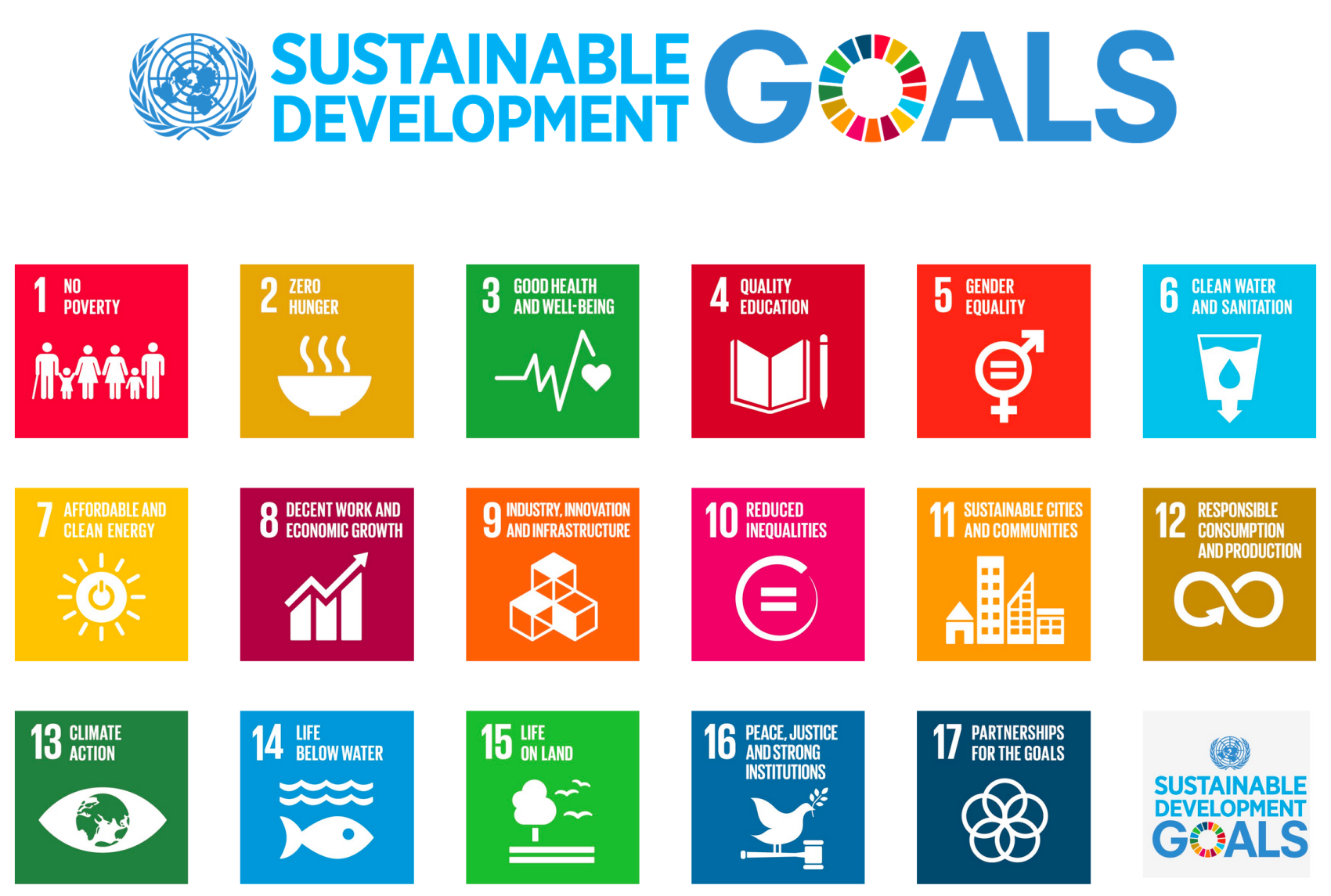In development work, UMN knows that poverty arises from a complex web of inter-related causes (fig 1). They turned this understanding of poverty on its head and tried to describe its opposite. The result was the fullness of life model. What UMN wanted to show in a simple graphic was how the impacts of actions taken in one area of a person or community’s life flow through into other areas (UMN, 2011).

In 2011 I was given the task of producing this graphic. I did some research and found that what we were trying to achieve was in a way similar to the Millenium Development Goals (now called the Sustainable Development Goals) (fig 2) that the United Nations had agreed to.

I liked the idea of having different colours for each goal/area of work, so we chose to use six different colours for each. We didn’t want these to be stand-alone graphics, however, but to all be connected reflecting the complex web of inter-related causes. I merged the colours into each other to show further linkage (fig 3).
In the middle of the whole web there used to be a black button with the logo of UMN and the type “Fullness of life for all”, however on reflection I wanted to show more of how each of the six areas can bring about the fullness of life. In 2016 I updated the graphic slightly, using one of the fonts we had adopted as an organisation, and in the centre, I made a background of bubbles made up of all the different colours and mingling with each other. I removed the UMN logo part of it as whenever it is used the logo accompanies it (either on a poster, in PowerPoint or a document), and I felt that this was no longer necessary.

This model has proved popular within the organisation for explaining UMN’s fullness of life theory and showing how by changing one thing in someone’s life, other areas can also be positively affected. I have heard since that other NGOs have even referred to it.
After the diagram was finished and we’d had posters printed, I made a PowerPoint presentation for use by anyone that needed to present some or all of UMN’s fullness of life ideas. I saw that the Executive Director had been using one which I felt could be improved upon with some smart features of PowerPoint. To help with this, I made different images highlighting each of the different areas, but had the rest of the diagram fade slightly. It could still be seen, but now it would help focus the audience receiving the presentation onto which area was being discussed (fig 4). There was also a slide which faded from the ‘life of poverty’ model into the ‘fullness of life’ model.

This presentation needs to be updated to reflect the latest design (figs 1 & 3), but overall these improvements have made it easier for people to see the interaction between the different areas of the model.
On further reflection, each of the areas might benefit from some a graphic or icon to reflect the chosen subject. This would be more like the Sustainable Development Goals and could help to illustrate the work.
References:
UMN (2011) Fullness of Life model. [Online] Available at: http://www.umn.org.np/our-vision [Accessed: 14 November 2017].
UN (2015) Sustainable Development Goals. [Online] Available at: http://www.un.org/sustainabledevelopment/sustainable-development-goals/ [Accessed: 14 November 2017].


 Cart is empty
Cart is empty